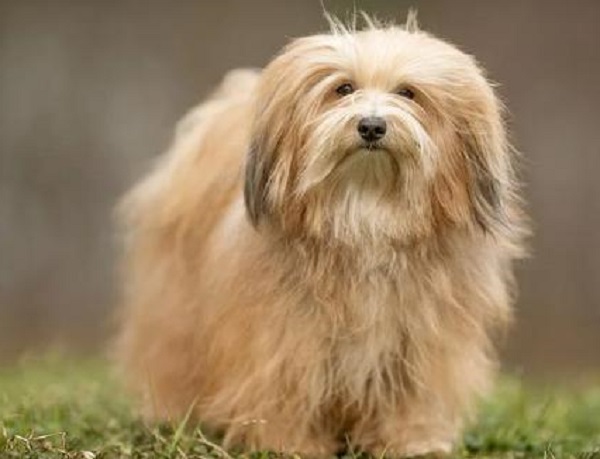The Havanese, a beautiful canine friend that is renowned for its unusually lively pace and opulent long coat, which often masks it as a cute furball. This relatively unknown breed was difficult to breed outside of Cuba at first, but it has grown quickly to become one of the fastest-growing dog breeds in the US. The Havanese dog, a dog breed native to Cuba, is well-known for its loving disposition and fit for a family. It has adapted well to American living and has been known as the ideal family companion.

An Overview of Havanese Dog History
The biggest of the Canary Islands, Tenerife, is the source of the fascinating history of the Havanese dog. The breed is said to have arrived in Cuba on ships in the middle of the fourteenth century, having come from this lovely area. Belonging to the non-sporting Bichon type group of dog breeds, the Havanese has a fascinating history entwined with travels by sea and cultural shifts.
Because of Cuba’s harsh export laws, which prohibited the transfer of goods—even these endearing dogs—to other countries, especially the United States, the breed was only accessible to a restricted audience.
Despite these difficulties, worldwide breeding initiatives have allowed the Havanese to transcend historical restrictions. As one of the dog breeds with the quickest rate of growth in the American Kennel Club today, it has a fascinating history filled with cross-cultural influences and maritime experiences.
Havanese dog characteristics

Appearance
Because of its little stature, the Havanese dog is classified as a “toy” breed. Its regular weight ranges from 10 to 16 pounds, and its average height is 9 to 10.5 inches.
Contemporary Havanese dogs exhibit a wide variety of hues in their look, from silver, orange, red, fawn, brown, black, and blue to white and cream. These hues may appear in a variety of patterns, such as parti-colored, piebald, black and white, brindle, solid, or sable.
The Havanese is distinguished by its long, silky double coat, Which has a delicate feel. Different coats feel different; some may be friskier and rougher, while others may be more greasy. Breeders liken it to raw silk, therefore frequent brushing is necessary to keep the coat healthy.
The Havanese is not ideal for cold areas because of its lightweight nature, even with a second coat. To safeguard your Havanese’s wellbeing while going outside during the colder months, use extra protection like sweaters or dog jackets.
Personality
Havanese dogs are well known for being laid back. They thrive on love and show unshakeable loyalty and dedication to their human mates. This breed is loving and cuddly, but they also like occupying themselves and playing with a variety of toys on their own.
Being intelligent and easily trained, Havanese dogs have made a name for themselves as a versatile working breed. They are excellent trackers, therapy dogs, service dogs, and performance dogs. Canine behavior experts advise beginning training early in a dog’s life since as it gets older, the breed may become resistant.
Havanese dogs are well-known for their friendly disposition; they often get along well with people and don’t often act aggressively toward strangers unless they are provoked. One of their distinguishing traits is a vibrant walk that gives the impression of being springy while in motion, which reflects the dog’s naturally upbeat disposition.
Longevity
Even though they are tiny in stature, Havanese dogs are energetic and need regular playing or walks. It may be used in a variety of dwellings, but it has to stay inside; it isn’t meant for outdoor life. Because of its enthusiasm to please, this breed thrives on friendship and finds training to be relatively simple. It’s not a very talkative dog, but it can bark at people, so you should think about noise limits. It takes perseverance and crate training to successfully housetrain a dog. Avoid spending a lot of time alone and provide your pet a box full of toys to help prevent separation anxiety. The Havanese, despite its size, should not be overindulged and should acquire good manners.
Havanese dog food
Feeding your Havanese 1/2 to 1 cup of premium dry food each day, split into two meals, is advised for optimum health. The precise quantity is determined by variables including Size, age, build, metabolism, and degree of exercise. Every dog is different, and Havanese breeds with greater levels of activity need a somewhat larger food consumption.
Selecting premium dog food is essential since it not only provides your dog with superior nutrition but also lowers the amount required. Give your Havanese two meals a day rather than free-feeding them to help them stay at their desired weight. Measure the food precisely.

It’s crucial to keep a check on your Havanese’s weight by doing the hands-on and eye tests. Look down at him; A healthy weight is indicated by a noticeable waist. You should be able to feel his ribs when you place your hands on his back without applying too much pressure. If necessary, increase your activity and dietary intake.
For more detailed information on selecting the right food and feeding guidelines, refer to our comprehensive resources on feeding your Havanese, whether it’s a puppy or an adult dog.
Color And Grooming Of A Havanese Coat
The thick, silky, and lightweight fur of the Havanese coat is a luxury combination that is available in a variety of hues, such as white, black, black and tan, sable, and gray. For show appearances, a wavy texture—which may range from straight to curly—is desirable.
Different people have different preferences when it comes to grooming: some prefer a shorter, low-maintenance coat, while show aficionados keep a longer coat. Regular bathing ensures cleanliness, and regular brushing—especially for long coats—prevents matting. It’s advisable to tie up hair above the eyes to avoid discomfort and to give a pleasant touch.
Although professional grooming is advised, normal maintenance should also include nail cutting, dental hygiene, and acclimating the Havanese to being groomed from an early age. Preventive care helps identify any health problems before they become serious.
Havanese dogs’ health issues
Havanese dogs, generally robust in health, may be susceptible to certain conditions. While not all Havanese will experience these issues, awareness is key for responsible ownership. Here are potential health concerns to consider:
- Hip Dysplasia: A degenerative disease affecting the hip joint. Management includes medication, weight control, nutritional supplements, and, in severe cases, surgery.
- Elbow Dysplasia: Similar to hip dysplasia, this ailment impacts the elbow joint. Treatment involves surgical intervention, weight management, and medication.
- Chondrodysplasia: A genetic disorder causing abnormally short limbs. Breeding is not advisable for dogs with this condition.
- Legg-Perthes Disease: Leads to hip joint deformity and arthritis. Treatment includes rest, physical therapy, and surgical intervention.
- Cataracts: Opacity on the eye lens, resulting in vision loss. Surgical removal is a common treatment.
- Deafness: Poses challenges for both dog and owner, with limited treatment options.
- Patellar Luxation: A common issue in small dogs, causing lameness. Surgical correction is often recommended.
- Portosystemic Shunt: Abnormal blood flow affecting the liver, leading to various symptoms. Management may involve dietary changes and surgery.
- Heart Murmur: Indicates disruptions in blood flow, requiring treatment such as medication, a special diet, and exercise restrictions.
- Mitral Valve Insufficiency: More prevalent in older dogs, causing heart failure. Treatment includes medication, dietary adjustments, and exercise restrictions.
When acquiring a Havanese puppy, choose a reputable breeder providing health clearances for the parents. Regular veterinary check-ups and a well-balanced lifestyle contribute to the overall health and happiness of your Havanese companion.
Does the Havanese breed get along with kids and other pets?
The Havanese breed is well known for its exceptional family-friendliness, showing love to all people and household pets, especially children of all ages. They are excellent playmates for children because of their kind disposition and lively manner. To avoid unintentional injury, kids must be taught safe interactions with Havanese despite their tiny size.
It is advised that little children be supervised while interacting with Havanese dogs to prevent inadvertent biting or tugging of the ears or tails. A harmonious connection is ensured when youngsters are taught appropriate approaches and respect the dog’s space, particularly at meals or when the dog is sleeping.
Havanese dogs often get along well with other pets in the home when they are introduced and socialized appropriately, creating a welcoming and inclusive family atmosphere.

